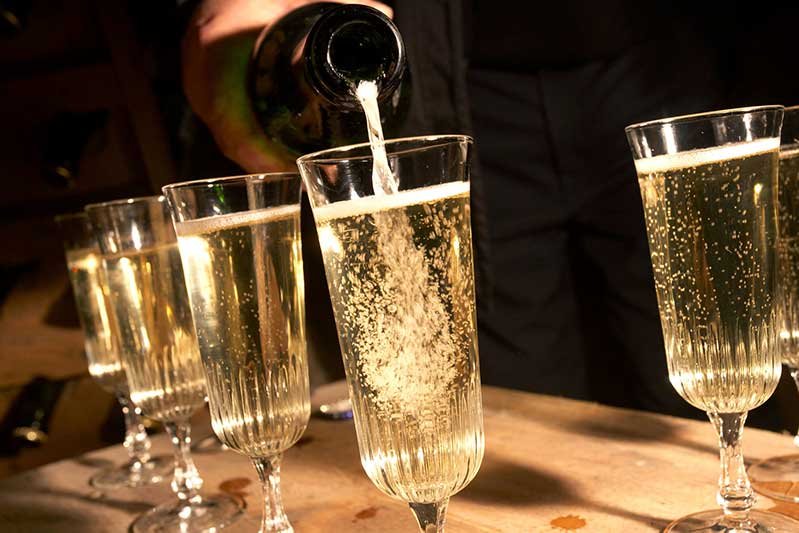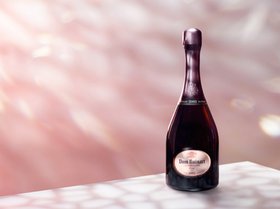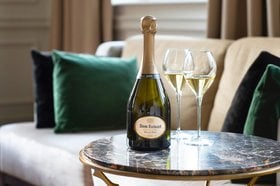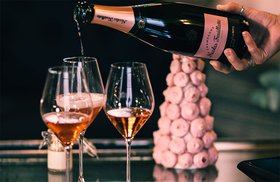What are the Best Champagne Vintages? (To Drink in 2025 & Store in Your Cellar)
The Champagne region of France relies on three grape varieties, Pinot Noir, Chardonnay, and Pinot Meunier, to produce the best Champagne vintages.
Getting your hands on a bottle of vintage Champagne (also known as millesime) is a rarity since only 10% of the total production in a year becomes vintage Champagne.
Producers usually declare only three vintages in a decade.
To fulfill demands, winemakers balance poor harvest years with bountiful harvest years. They blend multiple vintages to produce nonvintage Champagne.
What makes a Champagne vintage great?
Long growing seasons and warm, clear skies during harvest are paramount to bring out the complexities of Chardonnay and Pinot Noir grape varietals.
For example, the 2012 and 2013 Dom Perignon vintage (prestige Cuvee), both highly regarded vintages, benefited greatly from a warm summer.
This article is a comprehensive Champagne Vintage Guide with tips on whether to drink or hold on to your favorite vintage Champagne! We also explore some of the best Champagne vintages to date.
Further reading
- Want to master the art and science of investing in wine? Here's your Ultimate Wine Investment Guide.
- Also, explore the Best Champagnes of 2024 and some classic Champagne cocktail recipes.
Which Are The Best Champagne Vintages To Drink Or Store?

Champagne undergoes long aging in the bottle - so it’s too early to assess recent vintages.
But vintages from 2014, 2013, and 2012 are the most remarkable ones from the last decade.
The 2000 and 2002 Champagne vintages received wonderful reviews from wine experts. The 2008 vintage has been considered the most extraordinary of this century - credited for producing some excellent vintage champagne.
The best vintage Champagne of the ‘90s include 1995, 1996, 1997, 1998, and 1999 all of whichscored well with Robert Parker, and the 1996 vintage was perhaps the most outstanding.
The 1980s was a decade of ups and downs. However, vintages from 1982, 1985, 1988, and 1989 were well received by wine critics and Champagne lovers.
Now, let’s take a closer look at the different vintages from the past two decades.
Champagne Vintage Guide

This guide gives you a quick summary of Champagne vintages over the last twenty years.
- 2018 (Drink or Store): This vintage year saw the warmest summer after 2003, leading to a generous early harvest. The crop was acclaimed by many producers as ‘vintage of the century.’
- 2017 (Drink or Store): A tricky vintage year that saw extremes in temperature from cold winters to record-breaking heatwaves and a grey rot outbreak. The quality of Chardonnay was good, but Pinot Noir and Pinot Meunier saw a poor yield.
- 2016 (Drink or Store): This Champagne vintage is considered one of the worst on record. Strong hailstorms and frost destroyed a significant portion of the grapes, leading to higher prices of vintages by many Champagne brands.
- 2015 (Drink or Store): Some remarkable vintage Champagne was produced after the harvest of 2015. The fruit of this growing season was smaller and healthier due to uniform ripening during the dry summer.
- 2014 (Drink or Store): This vintage year saw a cool, rainy summer that yielded a large crop of healthy grapes. Many producers were excited about the 2014 vintage, but it wasn't universally lauded. The famous Champagne House of Krug and Dom Perignon (Moet & Chandon) didn't declare a vintage.
- 2013 (Drink or Store): This vintage year saw high temperatures too early in the season, which led to uneven ripening. As a result, harvest was delayed by a month. Some Champagne Houses declared vintages like Pierre Péters Cuvee Spéciale Le Mesnil, Krug vintage Clos du Mesnil, and Roger Brun La Pelle Ay Grand Cru.
- 2012 (Drink or Store): Early in the growing season of 2012, there was disease, frost, and bad weather. The weather eventually got better and healthy grapes were harvested. The base wine for most Champagne Houses was rich and had appropriate levels of acidity. Some great bubbles to look out for are Roederer Cristal (prestige Cuvee) and La Grande Dame.
- 2011 (Drink): The harvest of 2011 witnessed dry heat early on in the season, followed by heavy rains in summer. Winemakers were forced to harvest ripe grapes early, making it difficult for Champagne brands to declare vintages.
- 2010 (Drink): 2010 saw heavy August rains, which damaged grapes, making them unsuitable for a vintage year. Pinot Noir yields were affected, but Chardonnay grape varietal emerged victorious for nonvintage Champagne blends.
- 2009 (Drink): This vintage year didn't seem promising initially, but a good summer helped Champagne Houses replenish their reserve wine. Critics have rated Champagnes from 2009 as pleasurable and approachable (especially rose Champagne.)
- 2008 (Drink or Store): The 2008 growing season was gloomy at first, but it all came together in time for the harvest to make a great vintage year. Some delicious vintages to add to your collection are Agrapart Avize ‘Vénus’ and M-N Ledru Cuvee du Goulté.
- 2007 (Drink - past peak): One of the warmest springs in years, followed by a summer heatwave, led to earlier-than-usual flowering. Overall, 2007 Chardonnay was the best-performing grape in Champagne.
- 2006 (Drink): This vintage year saw varying temperatures, and producers were concerned that grapes wouldn't ripen. But the temperatures warmed in September, leading to the production of supple and expressive wines.
- 2005 (Drink): Overall, 2005 was a mixed vintage. Some months had favorable weather, but conditions weren't always ideal during the growing season. High temperatures led to slightly overripe grapes and bolder wines.
- 2004 (Drink): High quality, high quantity, and well-balanced wines were all hallmarks of 2004. The yield of healthy grapes saw very little in the way of disease or damage. The Blanc de Blancs from this vintage year were particularly remarkable.
- 2003 (Drink - past peak): The year 2003 saw spring frosts followed by a hot summer leading to a smaller yield of ripe grapes. Pinot Noir grapes overtook Chardonnay to become the best performer for this vintage year.
- 2002 (Drink or Store): 2002 was the first grand vintage of the decade. The weather was perfect, which allowed Pinot Noir and Chardonnay grapes to fully ripen, making it an excellent year for sparkling wine.
- 2001 (Past peak): This growing season is considered the worst vintage year for Champagne. Most of the harvest was ruined because of heavy rain, and the remaining crop was rather mild and lackluster.
- 2000 (Drink - past peak): This vintage year saw a difficult summer marked by rain and thunderstorms. Favorable September weather led to a good quality harvest that produced some memorable vintage wine.
Some other notable vintages include: 1995, 1996, 1988, 1985, 1982, 1973, 1971, 1964, 1961.
It’s Time To Raise A Champagne Toast!

When it comes to celebrations, nothing tops the glamour of a vintage bottle of Dom Perignon rose or a Krug vintage, Blanc de Blancs or Blanc de Noirs.
If you're a Champagne lover looking for a safe way to invest in some of the best sparkling wine bottles, opt for a trusted wine investment company like Vinovest.
Check out the Vinovest website to get hold of authentic Brut Champagne, vintage wine, Prosecco, or any other fine wine with just a few clicks!



